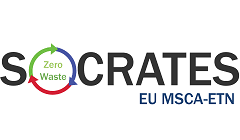Chemycal has been acquired by 3E
Learn MoreChemycal has been acquired by 3E
Learn MoreDiscover how Chemycal PRO helps you boosting your regulatory monitoring:

Researchers from the SREMat Research Group (SIM² KU Leuven) have published a critical review paper on the potential transformation of bauxite residue (also known as “red mud”) into high added value building materials, such as geopolymers, inorganic polymers and hybrid binders. Reviewing the results of a multitude of national and European red mud projects (incl. the recently completed EU MSCA-ETN REDMUD project), the analysis tries to “put things in perspective”. The paper was published in the Journal of Cleaner Production.
The use of the alumina production waste bauxite residue (BR) in alkali-activated materials (AAM), such as geopolymers, inorganic polymers and hybrid binders, is attracting considerable interest.
This work provides an in-depth review of the growing body of literature in the field of alkali-activated binders from BR and spent Bayer liquor, i.e. another possible resource from an alumina refinery. Additionally, an assessment of the possible role of these resources in alkali-activated materials is made.
The review is approaching the topic from the alumina refinery perspective and is not only presenting and analysing published work, but is synthesising these efforts in a framework that emphasises the potential and the challenges. Moreover, this work tries to map the path towards a realistic valorisation, that acknowledges true and perceived risks (e.g. radioactivity, leaching, legislation).
Besides the trends in scientific literature, also industrial-relevant literature (i.e. patents) are visualised using text analyses (data mining), and some emerging pilot-plant efforts are discussed as well. General barriers for an industrial implementation of BR valorisation and their relevance in view of AAM are discussed, including options on how they could be potentially lifted.
CONTINUE READING ON etn-socrates.eu
2013 © MyChemicalMonitoring. ALL Rights Reserved. About Us | Terms and Conditions